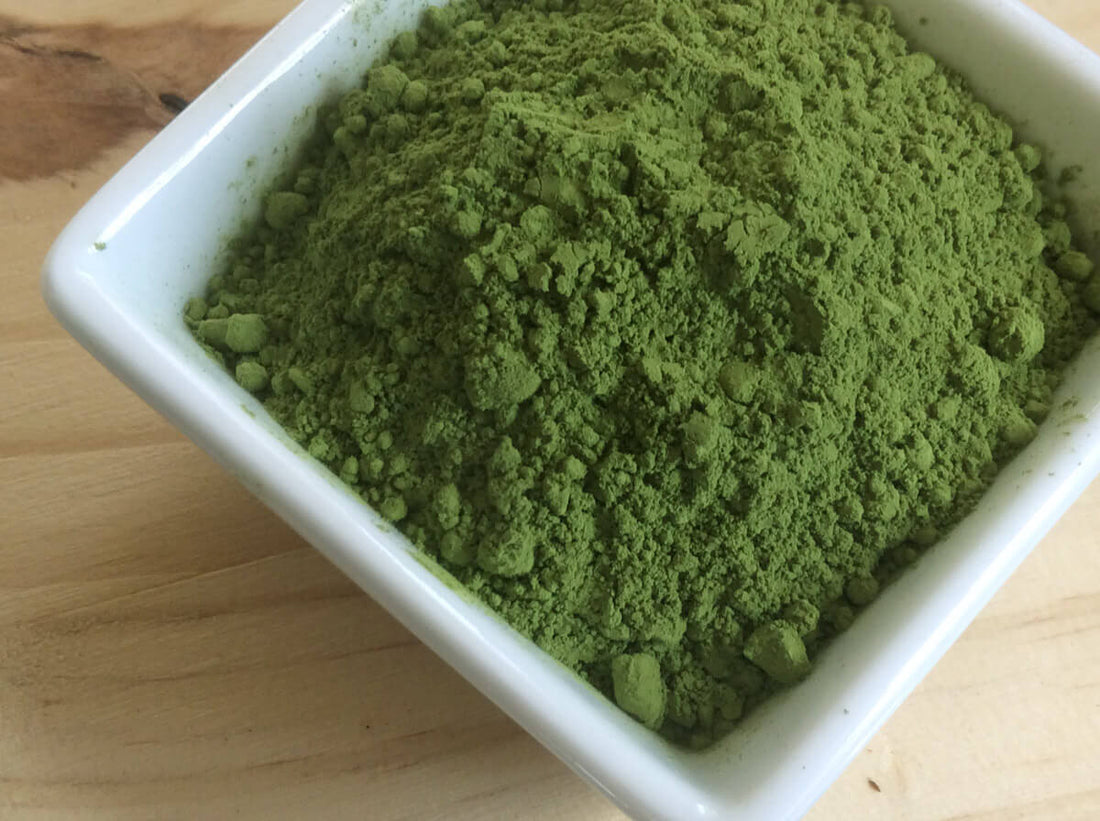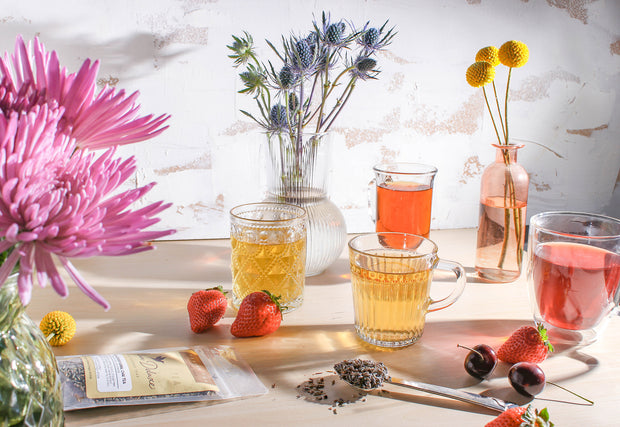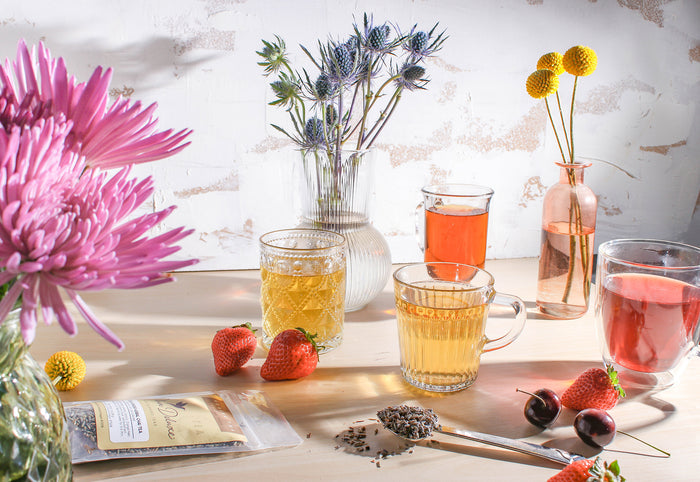Matcha, matcha, matcha -- it’s all the rage these days. But it doesn’t look like your typical loose leaf tea, and making it can seem intimidating at first. Plus, what’s the big deal with it anyway? Is it really that great? Let’s dig in to the matcha tea powder craze and break it down!

What Is Matcha?
To put it simply, matcha is powdered green tea. Okay, it’s a bit more than that, but at the root of it all, that’s what you have. It’s most often recognized as the tea used during chanoyu, or Japanese tea ceremony, and has been referred to as “the espresso of tea” because of its caffeine content.
Now, not just any green tea can be powdered and called matcha. Genuine matcha comes from high quality shade-grown green tea which is steamed, leaf veins and stems removed, and finely chopped. In this form, the tea is known as tencha and is ready to be ground into matcha powder. Historically, the tencha would be stone milled (as you can see in this video); today it is most often ground by machines.
Our Plum Deluxe matcha green tea powder is made from high quality, fair trade, organic tencha and comes straight from Japan. Like most matcha, it's dairy free, gluten free, and vegan!

Health Benefits of Matcha
Unlike drinking regular tea, with matcha tea powder you are consuming the entire leaf of the plant. That means you get even more health benefits from your beverage, including vitamins, antioxidants, and fiber. Matcha has been proven to help lower cholesterol and blood sugar and is also a source of vitamin C as well as beneficial minerals selenium, chromium, zinc, and magnesium. One of the biggest known benefits of matcha is its amount of EGCg, an antioxidant that boosts the metabolism and helps fight cancer.
Matcha has about three times the amount of caffeine of regular tea -- about as much as a cup of coffee. However, since the human body tends to metabolize tea differently than coffee, the caffeine boost from matcha usually presents itself as a slow burn rather than a sudden burst. (Your mileage may vary; if you are very sensitive to caffeine, keep this in mind when drinking matcha.)

How to Make Matcha
The traditional method of making matcha tea -- the one used in tea ceremonies -- involves a bamboo whisk, called a chasen, and a small pottery bowl called a chawan. Two scoops of matcha powder are placed in a sieve using a special scoop called a chashaku; the matcha is sifted into the bowl to prevent lumps. A small amount (about 1/4 cup) of hot -- but not boiling -- water is poured over the matcha, and it is then whisked vigorously until a fine foam forms on the surface of the water.
If that sounds a bit intimidating for everyday matcha consumption -- and if you’re having trouble finding a chasen -- you can treat your matcha the same way you do hot cocoa. Simply place your desired amount of matcha powder into a mug (we recommend 1/2 to 1 teaspoon), add hot water (175 degrees), and use a regular kitchen whisk or fork to blend the tea into a froth.
Even easier is what I like to call the smoothie method: Add matcha and hot water to your blender jar, vent (so the heat doesn’t cause a blow-up), and blend. Done! This also works best for making refreshing iced matcha.
One note about drinking matcha: Because it’s the ground up whole tea leaf, it won’t dissolve into liquid. That means you should drink it quickly or it will settle to the bottom of the cup and need to be whisked again.

Other Ways to Use Matcha
Speaking of smoothies, matcha is a natural addition to your favorite blended beverage. It’s also delicious in baked goods such as these Sour Cream Matcha Muffins and this Matcha Mousse. Try adding a few teaspoons to your pancake batter, homemade ice cream, or chocolate truffles.
No matter how you use it, you’ll be enjoying the wonderful taste and health benefits of matcha green tea powder.

![Spring Break Tea Variety Pack [6-Pack Variety of Flavors]](http://www.plumdeluxe.com/cdn/shop/files/spring-break-pack.jpg?v=1740682266&width=165)















